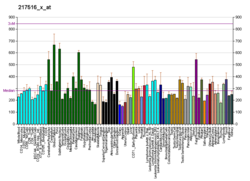| ARVCF | |||||||||||||||||||||||||||||||||||||||||||||||||||
|---|---|---|---|---|---|---|---|---|---|---|---|---|---|---|---|---|---|---|---|---|---|---|---|---|---|---|---|---|---|---|---|---|---|---|---|---|---|---|---|---|---|---|---|---|---|---|---|---|---|---|---|
| Identifiers | |||||||||||||||||||||||||||||||||||||||||||||||||||
| Aliases | ARVCF , armadillo repeat gene deleted in velocardiofacial syndrome, delta catenin family member, ARVCF delta catenin family member | ||||||||||||||||||||||||||||||||||||||||||||||||||
| External IDs | OMIM: 602269; MGI: 109620; HomoloGene: 31046; GeneCards: ARVCF; OMA:ARVCF - orthologs | ||||||||||||||||||||||||||||||||||||||||||||||||||
| |||||||||||||||||||||||||||||||||||||||||||||||||||
| |||||||||||||||||||||||||||||||||||||||||||||||||||
| |||||||||||||||||||||||||||||||||||||||||||||||||||
| |||||||||||||||||||||||||||||||||||||||||||||||||||
| |||||||||||||||||||||||||||||||||||||||||||||||||||
| Wikidata | |||||||||||||||||||||||||||||||||||||||||||||||||||
| |||||||||||||||||||||||||||||||||||||||||||||||||||
Armadillo repeat protein deleted in velo-cardio-facial syndrome is a protein that in humans is encoded by the ARVCF gene. [5] [6] [7]





